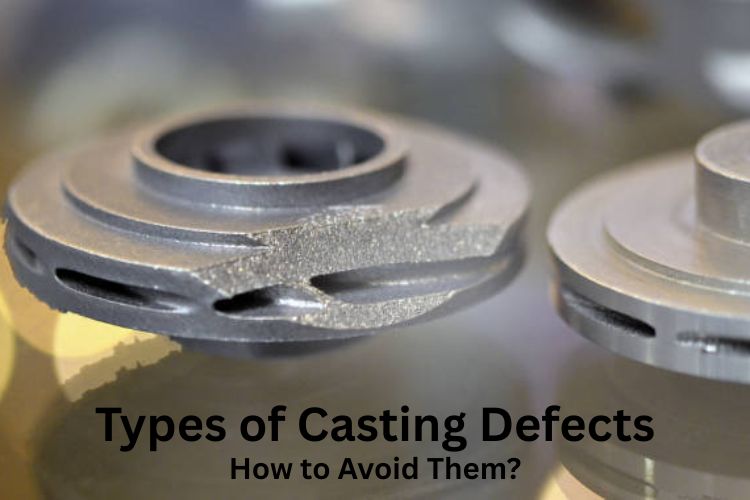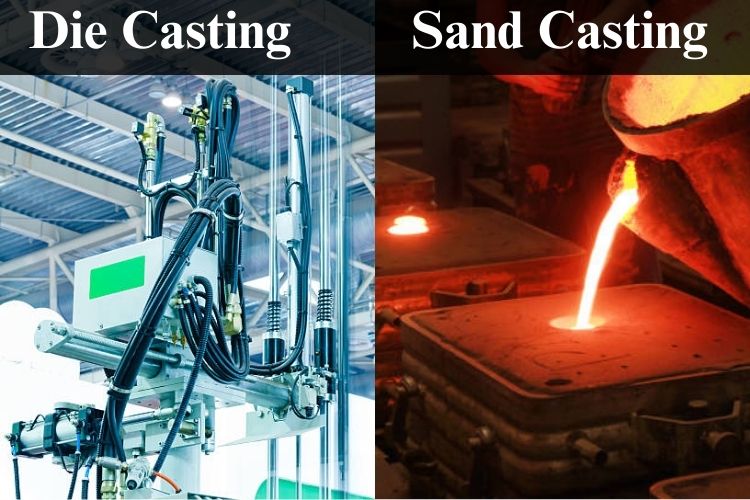The metal casting industry is the backbone of the manufacturing sector. There are a lot of innovative developments coming in this industry. Technological advancements have changed the casting methods, and innovated it. One of the casting procedures that transform the manufacturing industry is High Pressure Die Casting. It plays a major role in this process and provides the efficiency and precision benefits.
High Pressure Die Casting has enhanced productivity and cost effectiveness for manufacturers. It also enables faster manufacturing cycles and reduces material waste. The high level of repeatability and accuracy is only achieved through this die casting process, and ensures functional integrity and high performance of casting components. Let us talk about High Pressure Die Casting Advantages and Disadvantages more in this blog.
What is High-Pressure Die Casting?
High-Pressure Die Casting (HPDC) is a flexible production method for generating various product forms. The technique forces molten steel at high speed and high pressure into a closed metal die hollow space. The die is set up to the die casting system’s platens with its stationary and shifting halves. With its injection use of hydraulics and pressurized fuel to transport a piston ahead, the die casting method injects the molten metallic into the closed steel die.
Utilizing hydraulics and mechanical toggles, the clamping stop absorbs the injection pressure and holds the die shut whilst the element solidifies. The method can turn molten steel right into strong components in seconds, showcasing its versatility in diverse applications.
Procedure of High-Pressure Die Casting
Here is step by step procedure for high pressure die casting:
- Die Preparation
The die is wiped clean and inspected. This lets you ensure that it is freed from defects and that the surfaces are clean. The die is then preheated to an appropriate temperature to ensure the right metallic flow and solidification.
- Material Preparation and Melting
Next, we select the materials like aluminum, zinc, magnesium, or copper alloys, melt it at precise temperatures and ensure the high quality for high pressure injection.
- Die Preheating and Lubrication
The preheating of the die continues metal fluidity and is lubricated to useful resources in the release part and protects against thermal surprise. It also guarantees the molten metal fills the hollow space.
- Injection
Molten steel is poured right into a shot chamber. The shot sleeve is a heated chamber that is linked to the die cavity. The plunger in the shot sleeve is then pressed forward, injecting the molten steel into the die cavity below high pressure.
- Solidification
Due to the high pressure carried out, the molten steel comes into touch with the cool die hollow space. This solidifies the steel swiftly.
- Ejection
Once the casting has solidified, the die is opened. The final casting element is ejected. The casting is then trimmed and inspected to ensure that it meets the desired specifications.
Advantages and Disadvantages of High-Pressure Die Casting
Let us look at high-pressure die casting advantages and disadvantages:
Advantages
Here are the benefits of HPDC:
- HPDC method mainly casts light-weight alloy components quickly and in bulk.
- The precision and exceptional HPDC procedure provides components with refined floor textures, uniformity, and more suitable mechanical strengths.
- This method sticks out for its potential to fabricate elements with slender walls and include numerous inserts at once into the casting.
- One of the best things about HPDC is its vast applicability across industries, driven by its high efficiency and advanced component quality.
- HPDC boasts stunning production speeds, appropriate for both high-quantity production and fast prototyping.
- The technique achieves thin walls, under 0.40mm.
- HPDC’s adaptability in mould design allows the introduction of complex shapes. It also simplifies the assembly of artificial components.
Disadvantages
The drawbacks of HPDC are given below:
- Initial high prices because of the need for precision molds and specialized equipment, making it affordable for small production runs.
- This procedure is limited to metals with low melting factors.
- There is an ability for porosity and inner voids in high-pressure die casting products that can compromise mechanical residences and require extra fine management measures.
- Complex designs also lead to mold layout and casting challenges that grow the risks of defects.
Applications of High-Pressure Die Casting
The repeatability of high pressure die casting has made it essential for bulk production throughout various industries, including
- Automotive Industry
HPDC has been considered as the best production procedure for robust and lightweight vehicle components consisting of engine blocks and gears. Its use ensures that the steel automobile casting parts help enhance your vehicle’s fuel efficiency.
- Aerospace Industry
The aerospace industry prioritizes smaller weight categories, and high-pressure die casting thrives at casting skinny-walled components such as bulkheads and turbine blades.
- Electronics and Consumer Goods
Electronics and consumer items also use HPDC for systems consisting of laptops and phone accessories. These components require high-quality information, good surface finishes, and high-volume manufacturing that are only provided by HPDC efficiently.
- Medical Equipment
Medical equipment manufacturers depend upon high-pressure die casting for components that require biocompatibility and unique dimensions. Surgical equipment, diagnostic tool enclosures, and other clinical elements benefit from the dimensional accuracy and repeatability that the system gives.
- Industrial Equipment
Industrial machinery regularly operates under physical force; they have to demonstrate high levels of sturdiness. HPDC makes it possible to provide these machines and components without always incurring high production expenses.
Featured: Types of Casting Processes
How does RM Technocast help you?
RM Technocast is the leading manufacturing partner of High Pressure Die Casting. We are dedicated to hold standards of high quality casting products. We work with excellence in all stages of the casting process. From initial design to final manufacturing, we ensure that the materials undergo the quality process and provide you with tested products.
Conclusion
High Pressure Die Casting plays a crucial role in manufacturing products in various industries. It has the ability to produce lightweight, intricate, and high-precision metal parts at high volumes. These features make the High Pressure Die Casting suitable for use in various applications.
You must understand the specific requirements of your project, consult with RM Technocast experts, and then decide the best casting procedure.
FAQs
1. What makes the high-pressure and low-pressure die casting different?
The high pressure die casting forces molten metal into the mold under high pressure and velocity. This procedure is suitable for thin-walled and complex parts. On other hand, low pressure die casting fills molds and is used to make simpler and larger shapes.
2. Why is the High Pressure Die casting used?
The High Pressure Die Casting is used to produce complex and high precision metal parts in large volumes. This procedure is well known for fast ability and cycle times and produces intricate shapes.
3. What are the limitations of HPDC?
The limitations of HPDC are that it has high initial tooling costs, and produces metal components with porosity if not controlled well.
4. What is the lifespan of HPDC?
The lifespan of HPDC is more than 100,000 casting cycles. It makes this process suitable for long-run applications.
5. What are common materials used in High-Pressure Die Casting?
The common materials used in HPDC are zinc, aluminum, copper alloys, magnesium, etc. The right material is selected on the basis of your industry requirements and the casting parts you want to manufacture.


